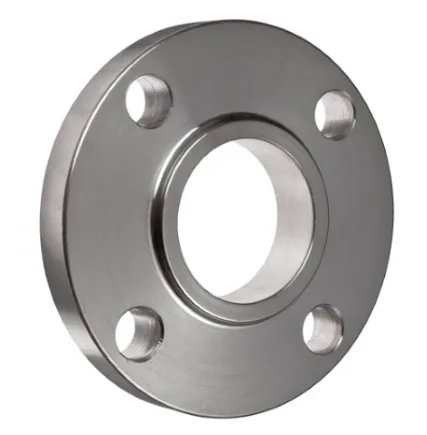-
Cangzhou Yulong Steel Co., Ltd.
-
Phone:
+86 13303177267 -
Email:
admin@ylsteelfittings.com
- English
- Arabic
- Italian
- Spanish
- Portuguese
- German
- kazakh
- Persian
- Greek
- French
- Russian
- Polish
- Thai
- Indonesian
- Vietnamese
- Zulu
- Korean
- Uzbek
- Hindi
- Serbian
- Malay
- Ukrainian
- Gujarati
- Haitian Creole
- hausa
- hawaiian
- Hebrew
- Miao
- Hungarian
- Icelandic
- igbo
- irish
- Japanese
- Javanese
- Kannada
- Khmer
- Rwandese
- Afrikaans
- Albanian
- Amharic
- Armenian
- Azerbaijani
- Basque
- Belarusian
- Bengali
- Bosnian
- Bulgarian
- Catalan
- Cebuano
- China
- China (Taiwan)
- Corsican
- Croatian
- Czech
- Danish
- Esperanto
- Estonian
- Finnish
- Frisian
- Galician
- Georgian
- Kurdish
- Kyrgyz
- Lao
- Latin
- Latvian
- Lithuanian
- Luxembourgish
- Macedonian
- Malgashi
- Malayalam
- Maltese
- Maori
- Marathi
- Mongolian
- Myanmar
- Nepali
- Norwegian
- Norwegian
- Occitan
- Pashto
- Dutch
- Punjabi
- Romanian
- Samoan
- Scottish Gaelic
- Sesotho
- Shona
- Sindhi
- Sinhala
- Slovak
- Slovenian
- Somali
- Sundanese
- Swahili
- Swedish
- Tagalog
- Tajik
- Tamil
- Tatar
- Telugu
- Turkish
- Turkmen
- Urdu
- Uighur
- Welsh
- Bantu
- Yiddish
- Yoruba

Oct . 02, 2024 03:51 Back to list
Puddle Flange Pricing for Construction and Industrial Applications Explained
Understanding Puddle Flange Prices A Comprehensive Overview
When it comes to construction and engineering, specific components play crucial roles in the overall functionality and safety of structures. One such component is the puddle flange, which is commonly used to provide a secure interface between pipelines and the structures through which they pass, particularly when dealing with water and wastewater systems. A keen understanding of puddle flange prices is essential for project planning and budgeting.
What is a Puddle Flange?
A puddle flange is a circular or rectangular flange typically made of metal or other durable materials. Its primary function is to create a waterproof seal where pipes penetrate walls, floors, or other surfaces. By creating a barrier against water ingress, puddle flanges ensure that liquids do not seep through the structure, which can lead to significant structural damage over time. These flanges are often utilized in facilities such as sewage treatment plants, industrial wastewater systems, and any other environment where pipes need to maintain integrity against water pressure.
Factors Influencing Puddle Flange Prices
1. Material The type of material used for the puddle flange significantly affects its price. Common materials include stainless steel, carbon steel, and PVC. Stainless steel, known for its corrosion resistance and durability, typically incurs higher costs compared to other materials. Choosing the right material depends on the specific environmental requirements of the project.
2. Size and Dimensions Larger puddle flanges naturally command higher prices due to the increased material costs and more complex manufacturing processes. Custom sizes may also incur additional costs, making standardized designs more cost-effective for common applications.
puddle flange price

3. Manufacturing Process The method of production—such as casting, forging, or machining—also influences the price. More labor-intensive manufacturing processes generally lead to higher prices. Moreover, the precision of the manufacturing process can impact the flange’s performance in its application.
4. Brand and Supplier Different manufacturers and suppliers have varying pricing structures based on their market position, brand reputation, and the quality of their products. It’s essential to source components from reputable suppliers to ensure reliability and safety.
5. Quantity Bulk purchasing often leads to discounts, making it more economical for larger projects. Conversely, purchasing a small quantity might result in higher prices per unit.
6. Market Trends Prices can fluctuate based on market demand, availability of materials, and overall economic conditions. During times of increased construction or infrastructural development, prices may rise due to heightened demand.
Conclusion
Understanding puddle flange prices involves more than just looking at the bottom line. It's essential to consider the various factors that contribute to costs, including material, size, manufacturing methods, and market trends. Proper budgeting for these components can save significant resources in the long run and contribute to the overall success and safety of construction projects. Engaging with knowledgeable suppliers and conducting thorough market research can also aid in acquiring quality puddle flanges at competitive prices. Thus, making informed decisions regarding this vital component is key for engineers and project managers alike.
Latest news
-
ANSI 150P SS304 SO FLANGE
NewsFeb.14,2025
-
ASTM A333GR6 STEEL PIPE
NewsJan.20,2025
-
ANSI B16.5 WELDING NECK FLANGE
NewsJan.15,2026
-
ANSI B16.5 SLIP-ON FLANGE
NewsApr.19,2024
-
SABS 1123 FLANGE
NewsJan.15,2025
-
DIN86044 PLATE FLANGE
NewsApr.19,2024
-
DIN2527 BLIND FLANGE
NewsApr.12,2024
-
JIS B2311 Butt-Welding Fittings LR/SR 45°/90° /180°Seamless/Weld
NewsApr.23,2024











